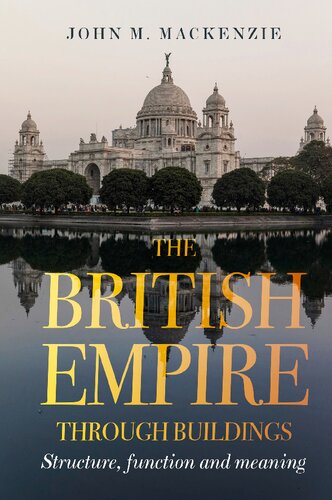Product desciption
The British Empire Through Buildings Structure Function And Meaning John M Mackenzie by John M. Mackenzie 9781526145956, 9781526145963, 9781526145970, 1526145952, 1526145960, 1526145979 instant download after payment.
The British Empire contributed greatly to the globalising of western buildings, towns and cities across the world. The requirements of security necessitated the construction of forts and barracks everywhere, while the need for mobility and ceremonial led to the use of large numbers of tents. As towns and cities developed, building types required for imperial rule, the operations of colonial economies and the comfort and cultural edification of Europeans appeared everywhere. These included government houses, town halls, courthouses, assembly and parliament buildings, company headquarters, customs houses and hotels. As the white bourgeoisie became a major global class, their representative buildings, such as clubs, libraries, museums, theatres, religious institutions, mission stations and schools, also spread worldwide. Some of these were designed for the dissemination of European culture to indigenous peoples, as well as the proselytisation of Christianity. Imperial rulers, their officials and troops additionally required particular settlements for leisure, recreation and the restoration of health, and these included hill stations in many colonies. The new technologies of the age, such as the telegraph and railways, also generated significant structures, widely dispersed. In addition to the great public and civic buildings, residential accommodation was created for Europeans, servants and workers. The result was a striking built environment which offers many insights into the nature, character and social and economic development of imperial rule, not least in the patterns of racial and class inclusion and exclusion which such buildings represented. It is an environment which remains key to the understanding of the modern world, and one which has survived, often through the modern fascination with ‘heritage’ as well as through its incorporation into new postcolonial arrangements.


